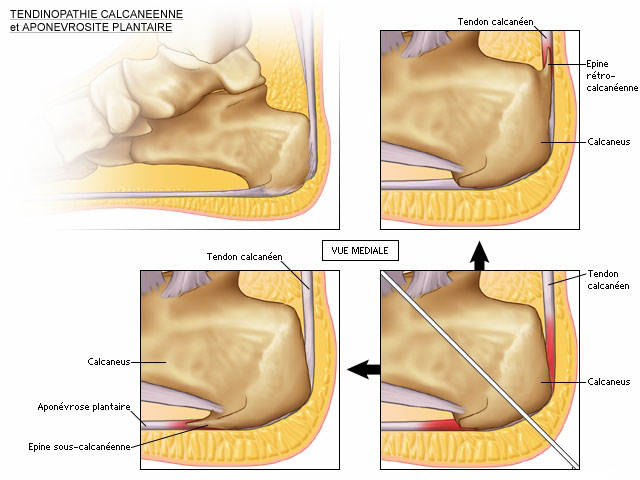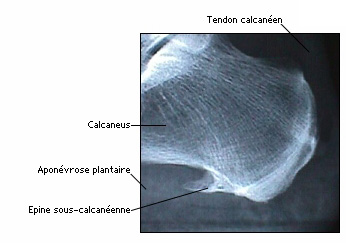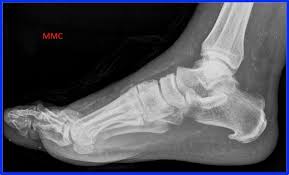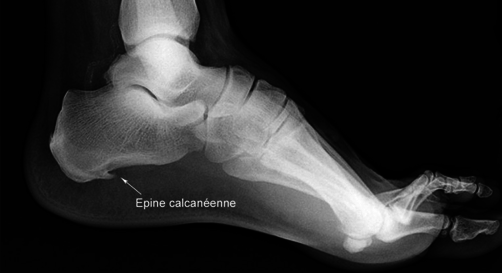
The heel
- Posterior or back pain of the calcaneus (heel bone) from conflict between shoe and heel: bursitis or hygroma (inflamed or swollen pocket).
Treatment: upper shoe buttress or inner heel; if significant swelling or bone abnormality (retrocalcaneous spine): Removal surgery.
- plantar or calcaneum pain by foot pad and/or plantar aponeurositic contact sport: “Calcaneous spine” on radiography.
Treatments: soles, stretching, infiltration, massages… rarely surgery.

Calcaneous spines (Lenoir’s spine) or aponeurosis, plantar fasciitis or talalgia
Treatment of calcaneous spines
The treatment of calcaneous spines is essentially orthopedic, usually without surgery. In the absence of appropriate care, the tendency is to worsen.
Above all, it includes two essential points: the wearing of orthopedic soles, and self-rehabilitation.
Orthopedic soles
The use of soles in the case of calcaneous spine must be daily, from morning to evening, every day. Also, it is recommended to bring 2-3 pairs of shoes to the podiatrist, so that he judges on the one hand the wear of your soles. On the other hand he will adapt the soles to your shoes usually worn.
Self-rehabilitation
Self-education consists of exercises with a phone book. This consists of putting your feet on the boot and making small movements from front to back, tilting the whole trunk. This allows the “posterior chain” (which includes the calf muscles, the Achilles Tendon, and the plantar arch) to be stretched several times a day, and every day, to “relax”.
Minor points in the management of a calcaneous spine involve:
- Even a minimal weight loss. Often we find a weight gain that accompanies the onset of pains (in support of walking on a single foot four times the weight of the body presses on it, in running it is eight times ). Either losing losing 2 kg is 8 kg less in support of walking on one foot, and 16 kg less in running…). Unfortunately, the opposite is true (weight gain).
- An adaptation of the shoe. We prefer shoes with small posterior heels (around 2cm), as you renew your wardrobe.
- Physiotherapy sessions. They will initially relieve you, before setting up the two essential points mentioned above.




